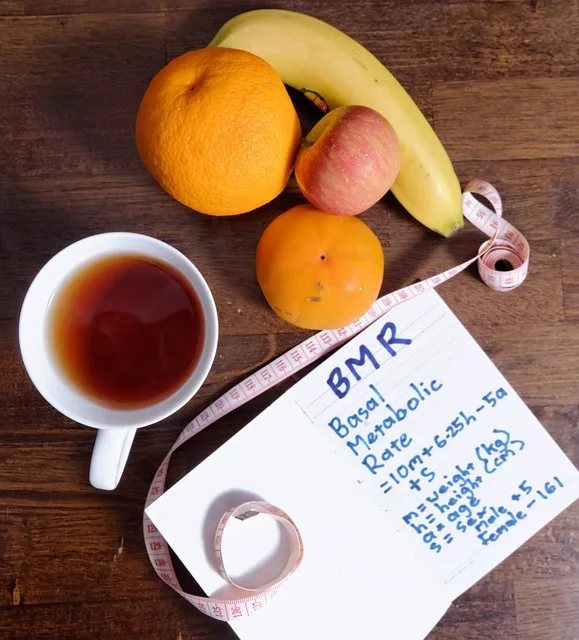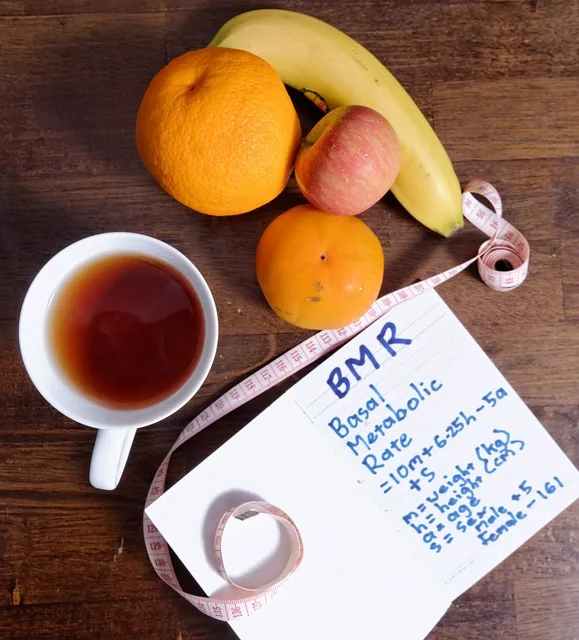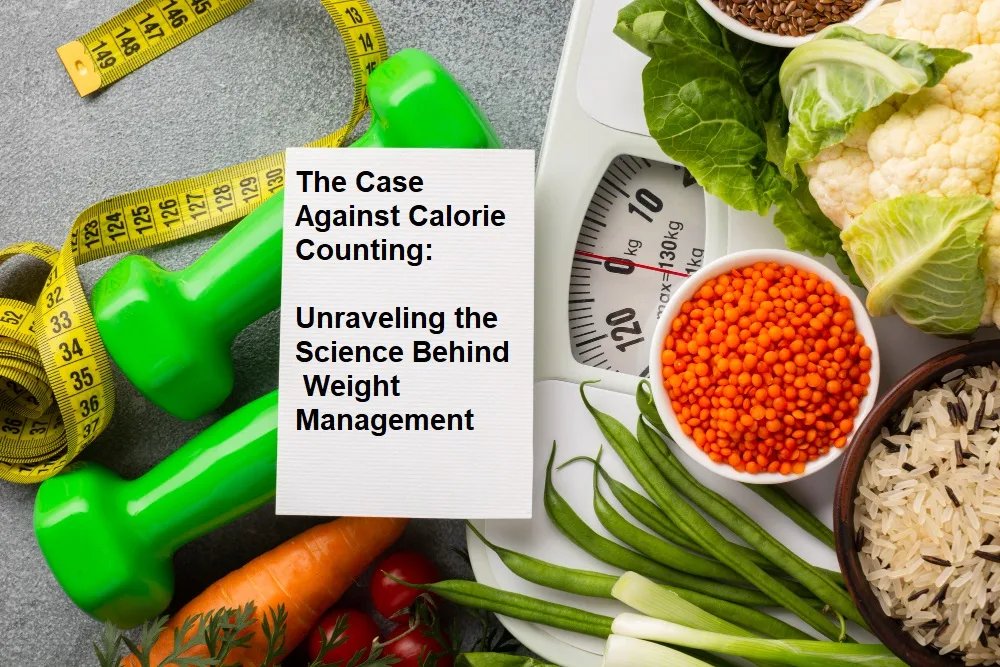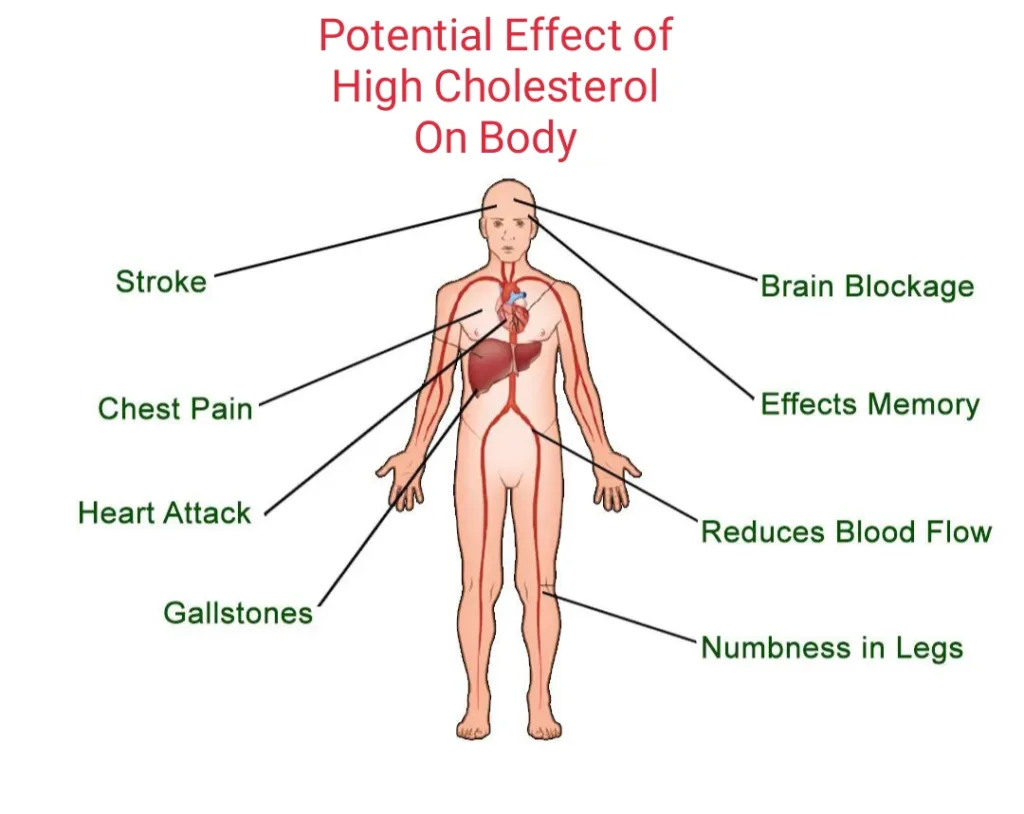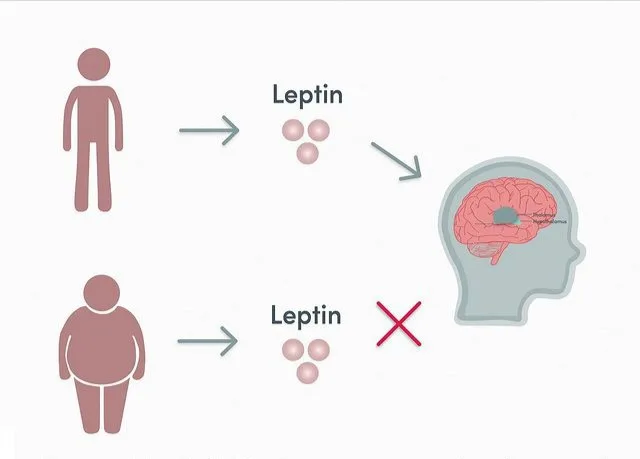The term “metabolism” gets thrown around a lot, especially in conversations about weight loss and dieting. But what exactly is it? Metabolism, frequently mentioned in conversations about health and weight control, extends beyond mere terminology; it serves as the chief conductor directing the chemical symphony within our bodies. Despite the casual use of the term, the intricacies and impact of metabolism on our day-to-day existence are frequently neglected.
In This Article
In this exploration, we will unravel the intricacies of metabolism, debunk myths, and illuminate the crucial role it holds in our overall well-being.
Metabolism Symphony
Envision your body as a magnificent orchestra, where each metabolic process acts as a vital musician contributing to the symphony of life. Whether in the tiniest bacteria or the largest mammals, this elaborate choreography of molecules ensures essential functions such as breathing, blinking, digestion, and regeneration. Every metabolic activity, from the energetic breakdown of catabolism to the constructive building of anabolism, plays a role in maintaining a delicate equilibrium that supports our existence. Through this comparison, we aim to render the intricacies of metabolism more relatable, underscoring the precision required for the symphony to resonate in perfect harmony.
What is Metabolism?
Metabolism refers to the set of chemical reactions that occur within the cells of living organisms to maintain life. These processes allow organisms to grow, reproduce, maintain their structures, and respond to their environments. 1
In the context of the human body, metabolism is the process by which it converts the food and drink consumed into energy. The food and drink you consume contain carbohydrates, fats, and proteins. 2 3
Your body breaks these down into simpler forms, which are then converted into energy. This energy is used by your body to carry out everyday functions such as breathing, circulating blood, and repairing cells. In essence, metabolism is the way the body transforms the nutrients from food into the energy needed to fuel its various activities.
Metabolism can be broadly categorized into two main types: catabolism and anabolism.
1. Anabolism: This involves the synthesis of complex molecules from simpler ones, requiring energy. Examples include the formation of proteins from amino acids or the synthesis of DNA.
2. Catabolism: This involves the breakdown of complex molecules into simpler ones, releasing energy in the process. Examples include the breakdown of glucose during cellular respiration.
The continuous interplay between these processes determines whether we undergo weight loss or gain, highlighting the delicate equilibrium they maintain. Appreciating this dynamic interaction provides insight into the intricacies of our body’s internal processes.
Metabolism is a crucial biological process that plays a central role in energy production and utilization. It involves various metabolic pathways, enzymes, and regulatory mechanisms that ensure the proper functioning of cells and organisms. The rate at which an organism’s body expends energy is often referred to as its metabolic rate.
Influential Factors Affecting Metabolic Balance
Several factors influence metabolism, including genetics, age, sex, body composition, and activity level. While some people may naturally have a faster metabolism, lifestyle factors such as regular exercise and a balanced diet can also impact metabolic rate. Understanding metabolism is essential for maintaining overall health and managing weight. 4
1. Basal Metabolic Rate (BMR)
Basal Metabolic Rate (BMR) refers to the amount of energy, measured in calories, that the body requires to maintain basic physiological functions while at rest. BMR is often used as a baseline for determining daily caloric needs and creating personalized nutrition and fitness plans.
Body Size and Composition
The dimensions and makeup of your body play a significant role in determining your BMR. 5
Individuals with larger bodies and more muscle mass tend to exhibit higher BMRs, as muscle tissue, being metabolically active, burns more calories even during periods of rest compared to fat tissue. 6 7 8
Age
With advancing age, BMR typically decreases due to the gradual decline in muscle mass. Recognizing this aspect is crucial for making lifestyle adjustments that support a healthy metabolism as one grows older.
Sex
Men generally experience higher BMRs than women, primarily attributed to their naturally greater muscle mass. 9 10
Acknowledging these gender-based differences is essential for tailoring strategies for metabolic health that align with individual characteristics.
Genetics
Our genetic makeup establishes the baseline for our metabolism. 11 8
Some individuals are fortunate to possess inherently faster metabolisms from birth, a trait determined by their unique genetic composition. 12 13
2. Physical Activity
Engaging in daily movements, ranging from simple fidgeting to structured exercise, significantly influences metabolic rate. 14 15
The more active one is, the higher their metabolic rate becomes, resulting in increased calorie expenditure throughout the day.
Muscle tissue requires more energy to maintain than fat tissue, so having more muscle means that the body will burn more calories even at rest.
In addition to the direct impact on metabolic rate, physical activity also has a range of other health benefits, including improved cardiovascular health, better mood, and reduced risk of chronic diseases such as diabetes and obesity.
So, find ways to incorporate physical activity into daily life, whether it’s through structured exercise routines, active hobbies, or simply finding ways to move more throughout the day. Even small changes, such as taking the stairs instead of the elevator or going for a short walk during a break, can add up to make a significant impact on metabolic rate.
3. Diet
The consumption of a well-balanced diet that includes whole foods plays a vital role in supporting metabolism. 16 17
Foods rich in nutrients, such as fruits, vegetables, lean protein, and whole grains, provide the essential components for efficient metabolic function. These nutrients help the body to effectively convert food into energy and support various metabolic processes.
By consuming a variety of whole foods, individuals can provide their bodies with the necessary components to maintain a healthy metabolism.
4. Hormones
Hormones serve as regulators of metabolism, and imbalances can lead to conditions like hypothyroidism and diabetes. 18 19
It is crucial to comprehend the functions of key hormones, such as thyroid hormones and insulin, to maintain optimal metabolic health. 20
It’s crucial to understand the functions of key hormones, such as thyroid hormones and insulin, in order to maintain optimal metabolic health. Thyroid hormones, produced by the thyroid gland, help regulate the body’s metabolic rate, while insulin, produced by the pancreas, is essential for regulating blood sugar levels and metabolism. Understanding how these hormones work and ensuring their proper balance is essencial for overall metabolic health.
5. Sleep
Adequate sleep is not merely a luxury but a fundamental requirement for overall health.
Quality sleep promotes hormonal equilibrium, and disruptions can elevate stress hormones, interfering with metabolic processes and potentially contributing to weight gain. 21 22
Disruptions in sleep patterns can lead to elevated stress hormones, which can interfere with metabolic processes and potentially contribute to weight gain. Therefore, ensuring that you get enough high-quality sleep is essential for supporting overall health and maintaining a healthy metabolism.
Practical Strategies for Enhancing Metabolism
Incorporate these practical strategies into daily life, you can enhance your metabolism and support overall health, the practical strategies for enhancing metabolism include:
1. Emphasize the Development of Muscle Mass
Prioritize the construction and upkeep of muscle mass as a strategic method to elevate your Basal Metabolic Rate (BMR).
Engage in regular strength training activities like weightlifting or bodyweight exercises, with a focus on compound movements such as squats, deadlifts, and bench presses. 23 These exercises are particularly effective in fostering comprehensive muscle growth.
Recognizing that muscle tissue is metabolically active implies that it consumes more calories than fat tissue even when at rest. Integrating strength training into your routine not only supports metabolic health but also contributes to a sculpted physique and overall well-being improvement.
2. Maintain an Active Lifestyle
Metabolism is not restricted to the gym; it is an integral aspect of your daily routine. Cultivate a lifestyle that promotes movement—opt for:
- aerobic activity such as stairs, walk or bike to nearby destinations,
- strength training
- incorporate brief bursts of physical activity throughout your day.
Strength training can increase your metabolism by increasing your muscle mass. 24 25 This means that your body will burn more kilojoules even when at rest.
These small, consistent efforts contribute to an elevated metabolic rate, fostering calorie burn and overall metabolic efficiency. In other words, being active throughout the day, in addition to regular exercise, can help support a healthy metabolism.
3. Follow a Well-Balanced Diet
The food you ingest serves as the fuel for your metabolic engine. Prioritize a well-balanced diet that encompasses a variety of nutrient-rich foods, including fruits, vegetables, lean proteins, whole grains, and healthy fats.
Ensuring an ample intake of protein is particularly crucial, as it supports muscle maintenance and repair, contributing to an increased BMR. Conversely, be mindful of processed foods high in sugar and unhealthy fats, as these can have adverse effects on your metabolism over time.
4. Ensure Sufficient Sleep
Quality sleep is not merely a luxury; it is a fundamental cornerstone of good health. Aim for 7-8 hours of uninterrupted sleep each night to support your body’s metabolic processes. During sleep, vital functions such as hormone regulation and cellular repair occur. Prolonged sleep deprivation can lead to elevated stress hormone levels, adversely impacting metabolism and potentially leading to weight gain.
Establish a sleep-conducive environment by adhering to a consistent sleep schedule, minimizing screen time before bedtime, and creating a comfortable sleeping space.
5. Effectively Manage Stress
Persistent stress can have detrimental effects on your metabolic health. Integrate stress-management practices into your daily routine, such as yoga, meditation, or spending time in nature. 26) These activities help lower stress hormone levels, fostering a more balanced and efficient metabolism.
Identify stress triggers in your life and develop healthy coping mechanisms. By managing stress effectively, you not only support your metabolism but also enhance your overall mental and emotional well-being.
Conclusion
As we delve into the intricacies of metabolism, we uncover a complex interplay of processes that govern our daily existence. From the fundamental rhythms of the body to the dynamic dance of catabolism and anabolism, comprehending these mechanisms provides us with the knowledge to make informed decisions about our health.
Recognizing the factors that influence metabolic equilibrium—such as basal metabolic rate, physical activity, diet, hormones, sleep, and stress—opens avenues for a proactive approach to well-being. Equipped with practical tips for optimizing metabolism, we gain the means to cultivate a harmonious relationship between our bodies and the internal conductor guiding us.
It’s crucial to understand that the journey to metabolic health is not a sprint but a lifelong symphony. By embracing these principles and integrating them into your lifestyle, you embark on a path of vitality, resilience, and enduring well-being. May your metabolic symphony persist, creating a life in harmony with the rhythm of health.
- Judge A, Dodd MS. “Metabolism.” Essays Biochem. 2020 Oct 8;64(4):607-647. doi: 10.1042/EBC20190041. PMID: 32830223; PMCID: PMC7545035.[↩]
- Holesh JE, Aslam S, Martin A. “Physiology, Carbohydrates. [Updated 2023 May 12].” In: StatPearls [Internet]. Treasure Island (FL): StatPearls Publishing; 2023 Jan-. Available from: https://www.ncbi.nlm.nih.gov/books/NBK459280/.[↩]
- Sánchez López de Nava A, Raja A. “Physiology, Metabolism.” [Updated 2022 Sep 12]. In: StatPearls [Internet]. Treasure Island (FL): StatPearls Publishing; 2023 Jan-. Available from: https://www.ncbi.nlm.nih.gov/books/NBK546690/.[↩]
- Westerterp KR. “Control of Energy Expenditure in Humans.” [Updated 2022 Mar 21]. In: Feingold KR, Anawalt B, Blackman MR, et al., editors. Endotext [Internet]. South Dartmouth (MA): MDText.com, Inc.; 2000-. Available from: https://www.ncbi.nlm.nih.gov/books/NBK278963/.[↩]
- Bi X, Forde CG, Goh AT, Henry CJ. “Basal Metabolic Rate and Body Composition Predict Habitual Food and Macronutrient Intakes: Gender Differences.” Nutrients. 2019 Nov 4;11(11):2653. doi: 10.3390/nu11112653. PMID: 31689964; PMCID: PMC6893862.[↩]
- Zurlo F, Larson K, Bogardus C, Ravussin E. “Skeletal muscle metabolism is a major determinant of resting energy expenditure.” J Clin Invest. 1990 Nov;86(5):1423-7. doi: 10.1172/JCI114857. PMID: 2243122; PMCID: PMC296885.[↩]
- Boutcher SH. “High-intensity intermittent exercise and fat loss.” J Obes. 2011;2011:868305. doi: 10.1155/2011/868305. Epub 2010 Nov 24. PMID: 21113312; PMCID: PMC2991639.[↩]
- Farhana A, Rehman A. “Metabolic Consequences of Weight Reduction.” [Updated 2023 Jul 10]. In: StatPearls [Internet]. Treasure Island (FL): StatPearls Publishing; 2023 Jan-. Available from: https://www.ncbi.nlm.nih.gov/books/NBK572145/.[↩][↩]
- Del-Cuerpo I, Jerez-Mayorga D, Chirosa-Ríos LJ, Morenas-Aguilar MD, Mariscal-Arcas M, López-Moro A, Delgado-Floody P. “Males Have a Higher Energy Expenditure than Females during Squat Training.” Nutrients. 2023 Aug 4;15(15):3455. doi: 10.3390/nu15153455. PMID: 37571392; PMCID: PMC10421381.[↩]
- Wu BN, O’Sullivan AJ. “Sex differences in energy metabolism need to be considered with lifestyle modifications in humans.” J Nutr Metab. 2011;2011:391809. doi: 10.1155/2011/391809. Epub 2011 Jun 6. PMID: 21773020; PMCID: PMC3136178.[↩]
- Farhud D, Zarif Yeganeh M, Zarif Yeganeh M. “Nutrigenomics and nutrigenetics.” Iran J Public Health. 2010;39(4):1-14. Epub 2010 Dec 31. PMID: 23113033; PMCID: PMC3481686.[↩]
- van Dongen J, Willemsen G, Chen WM, de Geus EJ, Boomsma DI. “Heritability of metabolic syndrome traits in a large population-based sample.” J Lipid Res. 2013 Oct;54(10):2914-23. doi: 10.1194/jlr.P041673. Epub 2013 Aug 5. PMID: 23918046; PMCID: PMC3770104.[↩]
- Bouchard C, Rankinen T, Timmons JA. “Genomics and genetics in the biology of adaptation to exercise.” Compr Physiol. 2011 Jul;1(3):1603-48. doi: 10.1002/cphy.c100059. PMID: 23733655; PMCID: PMC3938186.[↩]
- von Loeffelholz C, Birkenfeld AL. “Non-Exercise Activity Thermogenesis in Human Energy Homeostasis.” [Updated 2022 Nov 25]. In: Feingold KR, Anawalt B, Blackman MR, et al., editors. Endotext [Internet]. South Dartmouth (MA): MDText.com, Inc.; 2000-. Available from: https://www.ncbi.nlm.nih.gov/books/NBK279077/.[↩]
- Committee on Physical Activity and Physical Education in the School Environment; Food and Nutrition Board; Institute of Medicine; Kohl HW III, Cook HD, editors. Educating the Student Body: Taking Physical Activity and Physical Education to School. Washington (DC): National Academies Press (US); 2013 Oct 30. “3, Physical Activity and Physical Education: Relationship to Growth, Development, and Health.” Available from: https://www.ncbi.nlm.nih.gov/books/NBK201497/.[↩]
- Chen Y, Michalak M, Agellon LB. “Importance of Nutrients and Nutrient Metabolism on Human Health.” Yale J Biol Med. 2018 Jun 28;91(2):95-103. PMID: 29955217; PMCID: PMC6020734.[↩]
- Bo S, Fadda M, Fedele D, Pellegrini M, Ghigo E, Pellegrini N. “A Critical Review on the Role of Food and Nutrition in the Energy Balance.” Nutrients. 2020 Apr 22;12(4):1161. doi: 10.3390/nu12041161. PMID: 32331288; PMCID: PMC7231187.[↩]
- Mullur R, Liu YY, Brent GA. “Thyroid hormone regulation of metabolism.” Physiol Rev. 2014 Apr;94(2):355-82. doi: 10.1152/physrev.00030.2013. PMID: 24692351; PMCID: PMC4044302.[↩]
- Hage M, Zantout MS, Azar ST. “Thyroid disorders and diabetes mellitus.” J Thyroid Res. 2011;2011:439463. doi: 10.4061/2011/439463. Epub 2011 Jul 12. PMID: 21785689; PMCID: PMC3139205.[↩]
- Shahid MA, Ashraf MA, Sharma S. “Physiology, Thyroid Hormone.” [Updated 2023 Jun 5]. In: StatPearls [Internet]. Treasure Island (FL): StatPearls Publishing; 2023 Jan-. Available from: https://www.ncbi.nlm.nih.gov/books/NBK500006/.[↩]
- Hirotsu C, Tufik S, Andersen ML. “Interactions between sleep, stress, and metabolism: From physiological to pathological conditions.” Sleep Sci. 2015 Nov;8(3):143-52. doi: 10.1016/j.slsci.2015.09.002. Epub 2015 Sep 28. PMID: 26779321; PMCID: PMC4688585.[↩]
- Kim TW, Jeong JH, Hong SC. “The impact of sleep and circadian disturbance on hormones and metabolism.” Int J Endocrinol. 2015;2015:591729. doi: 10.1155/2015/591729. Epub 2015 Mar 11. PMID: 25861266; PMCID: PMC4377487.[↩]
- Morris SJ, Oliver JL, Pedley JS, Haff GG, Lloyd RS. “Comparison of Weightlifting, Traditional Resistance Training and Plyometrics on Strength, Power and Speed: A Systematic Review with Meta-Analysis.” Sports Med. 2022 Jul;52(7):1533-1554. doi: 10.1007/s40279-021-01627-2. Epub 2022 Jan 13. PMID: 35025093; PMCID: PMC9213388.[↩]
- Thomas MH, Burns SP. “Increasing Lean Mass and Strength: A Comparison of High Frequency Strength Training to Lower Frequency Strength Training.” Int J Exerc Sci. 2016 Apr 1;9(2):159-167. PMID: 27182422; PMCID: PMC4836564.[↩]
- McPherron AC, Guo T, Bond ND, Gavrilova O. “Increasing muscle mass to improve metabolism.” Adipocyte. 2013 Apr 1;2(2):92-8. doi: 10.4161/adip.22500. PMID: 23805405; PMCID: PMC3661116.[↩]
- Can YS, Iles-Smith H, Chalabianloo N, Ekiz D, Fernández-Álvarez J, Repetto C, Riva G, Ersoy C. “How to Relax in Stressful Situations: A Smart Stress Reduction System.” Healthcare (Basel). 2020 Apr 16;8(2):100. doi: 10.3390/healthcare8020100. PMID: 32316370; PMCID: PMC7349817.[↩]


